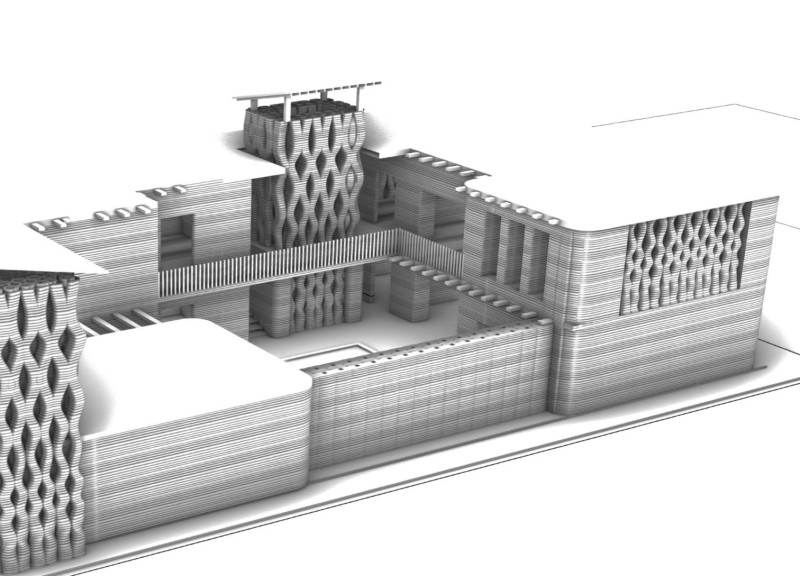5 key facts about this project
Functionally, the building is designed to accommodate a variety of activities, promoting social interaction and collaboration among its occupants. The layout is strategically conceived to ensure a natural flow between different areas, allowing for both private and communal uses. This attention to multifunctionality is essential in contemporary architectural practices, where versatility is increasingly valued. Each space within the structure has been carefully planned to serve its intended purpose while allowing adaptability for future changes.
One distinguishing feature of the project is its innovative use of materials. The design incorporates a carefully selected palette that not only emphasizes sustainability but also enhances the building's integration into its setting. Key materials used include concrete, glass, timber, and metal, each chosen for its durability and environmental performance. The concrete provides robust structural support, while the extensive glass elements invite natural light into the interior. This approach fosters an inviting ambience, minimizing dependency on artificial lighting and contributing to overall energy efficiency. Timber brings warmth to the design; its use both indoors and externally promotes a connection to nature. The metal accents lend a contemporary touch, articulating the building's modern architectural language.
The architectural design is marked by its unique approach to spatial organization. Open-plan areas encourage fluid movement and the ability to reconfigure spaces as necessary. This adaptability reflects contemporary lifestyles where occupants increasingly engage in varied functions within shared environments. Additionally, strategically placed communal zones foster interaction among users, underlining the project's commitment to community-building.
The exterior of the building is equally noteworthy. Its façade demonstrates an engaging dialogue between solidity and transparency. The juxtaposition of solid walls with expansive glass sections not only creates visual interest but also allows the interior spaces to interact with the environment in a dynamic manner. Through thoughtful landscaping, the external area complements the architectural design, contributing to a pleasant outdoor experience for users.
One of the most significant aspects of this project is its commitment to sustainability. The design incorporates a variety of energy-efficient systems, including solar panels, rainwater harvesting, and natural ventilation. These elements work in unison to reduce the building’s carbon footprint while educating occupants on sustainable practices. The project embodies a forward-thinking approach, demonstrating how modern architecture can be both beautiful and responsible.
Furthermore, the site selection plays a critical role in the project’s success. Positioned within a vibrant community, the building responds to the local context not only in design but also in purpose. It aims to enhance the neighborhood by providing a space that serves diverse groups and fosters a sense of belonging among residents. This consideration for community integration elevates the project beyond mere aesthetics, positioning it as a vital component in the social fabric of the area.
As visitors explore the architectural plans, sections, and designs, they can appreciate the meticulous attention to detail and the clear architectural ideas driving this project. The careful consideration given to each aspect of the design exemplifies how architecture can thoughtfully respond to contemporary issues, such as sustainability and community interaction. The project's unique design approaches emphasize a commitment to creating engaging, multifunctional spaces that are in tune with their surroundings. Readers are encouraged to delve deeper into the project presentation to gain further insights into its implementation and the thoughtful considerations that shaped its design.


 Rana Ibrahim
Rana Ibrahim 























